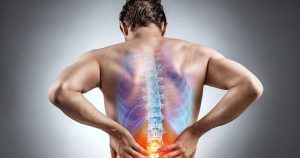Back Pain Unveiled: Non-Pharmaceutical Approaches for Relief
Introduction: Welcome to a comprehensive exploration of non-pharmaceutical approaches aimed at providing relief from the persistent discomfort of back pain. As a seasoned physical therapist, I’ve witnessed firsthand the challenges faced by individuals dealing with back pain and the desire for effective, non-medicated solutions. This article is dedicated to unveiling a range of strategies, offering relief without relying solely on medications.
Understanding Back Pain: Causes and Impacts Back pain is a complex issue affecting millions globally and can have various origins, such as poor posture, injuries, or underlying health conditions. Chronic poor posture, typically arising from prolonged sitting or incorrect positioning at work, is a leading cause. Additionally, sudden injuries from accidents or strains can trigger acute pain or exacerbate underlying conditions.
Understanding these causes is crucial in devising an effective treatment plan. For instance, identifying poor posture as the root cause can lead to corrective exercises targeting specific muscle groups to alleviate pain and prevent future discomfort.
Non-Pharmaceutical Approaches: A Holistic Overview Embark on a comprehensive journey through various non-drug strategies that aim not only to alleviate back pain but also to promote overall well-being.
1. Physical Therapies: Strengthening and Flexibility Engaging in exercises focused on strengthening the core muscles and enhancing flexibility can be pivotal in managing back pain. Core-strengthening exercises such as planks, pelvic tilts, and bridges not only alleviate immediate pain but also contribute to long-term prevention by strengthening muscles supporting the spine.
Moreover, incorporating flexibility exercises such as yoga or Pilates can increase the range of motion and reduce stiffness in the back, leading to decreased pain and improved functionality.
2. Mind-Body Techniques: Relaxation and Stress Reduction The link between stress, tension, and back pain is well-documented. Techniques such as meditation, deep breathing exercises, and guided imagery can significantly reduce muscle tension associated with stress, leading to reduced pain and increased relaxation.
By integrating mindfulness practices into daily routines, individuals can learn to manage stress, potentially minimizing the impact of stress-induced back pain.
3. Alternative Therapies: Acupuncture, Chiropractic, and Massage Alternative therapies such as acupuncture, chiropractic adjustments, and therapeutic massages have gained popularity in managing back pain.
Acupuncture, an ancient Chinese practice, involves the insertion of fine needles into specific points in the body to stimulate healing. Chiropractic adjustments focus on spinal manipulation to enhance alignment and reduce pain, while therapeutic massages aim to alleviate muscle tension, promoting relaxation and pain relief.
4. Lifestyle Adjustments: Ergonomics and Daily Habits Small lifestyle changes, such as optimizing workspaces with ergonomic chairs and desks, can alleviate strain on the back. Furthermore, adopting proper lifting techniques and maintaining a healthy weight can prevent sudden injuries and reduce the stress on the spine.
By maintaining proper posture, investing in ergonomic furniture, and incorporating regular breaks for movement, individuals can significantly reduce the strain on their back during long work hours.
5. Dietary and Nutritional Strategies: Supporting Back Health Nutrition plays a crucial role in back health. A diet rich in anti-inflammatory foods, such as fatty fish, fruits, and vegetables, can reduce inflammation in the body, benefiting the spine and potentially reducing back pain.
Additionally, ensuring adequate hydration and the intake of nutrients like calcium and vitamin D can contribute to bone health, potentially reducing the risk of conditions leading to back pain.

Conclusion: Embracing Natural Solutions This article aims to empower individuals seeking non-pharmaceutical methods for managing back pain. These recommendations are derived from reputable sources and expertise, offering a holistic approach to a pain-free life.
Before implementing any new treatment plan, it’s essential to consult a healthcare professional to ensure safety and effectiveness.
The information provided serves as a guide to a holistic approach to managing and alleviating back pain, naturally and effectively.




